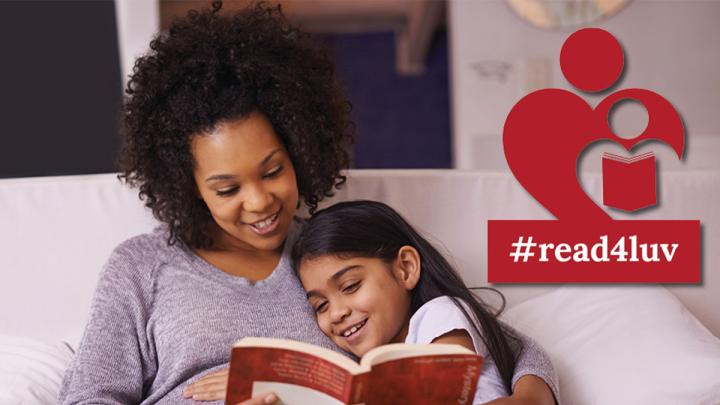
The poem The Reading Mother by Strickland Gillilan ends with the heartfelt stanza “Richer than I you can never be—I had a Mother who read to me” that evokes fond memories for many fortunate people who also were read to as children. However, beyond sentiment and nostalgia, there are compelling reasons for reading aloud to children.
This February, Carol Anne St. George, EdD, an associate professor and literacy expert at the University of Rochester’s Warner School of Education, wants kids to fall in love with reading.
According to St. George, reading aloud to children sets them up for a lifelong love of books and reading. “It helps grow their vocabulary and their understanding about the world,” she says. “The closeness of snuggling up with a favorite book leads to an increase in self-confidence and imagination, and helps children gain a wealth of knowledge from the books you share. And it only takes 15 minutes a day of reading together to nurture this growth.”
Research demonstrates that if a child is not reading at grade level by third grade, their ability to meet future academic success and graduate on time are diminished. Teachers know that up to third-grade children are learning to read. After third grade, students are reading to learn. According to St. George, it is impossible to be successful in science, social studies, and even mathematics without a strong foundation in reading and literacy.
Setting aside a block of 15 minutes a day to reading together can yield impressive benefits for everyone involved. This practice builds knowledge, increases vocabularies, strengthens family relationships, improves school success, and nurtures a lifelong love for reading.
St. George offers the following helpful tips for reading aloud with children:
- Make the read-aloud an enjoyable experience. Snuggle up, relax, and have fun. Take time with a page, and point out pictures and other print features. Children may want to take an active part by turning the pages when you read or being responsible for reading/saying aloud certain words within the story.
- Select a wide variety of books, genres, and illustration styles.
- Read with expression. Use funny voices for the different characters and sounds in the text.
- Fluctuating your pace, reading faster or slower, can help if your child becomes distracted. Your child may want to draw while you read or act out portions of the story. As your child gets older, increase the length of time reading together and the complexity of the story.
- Children may want to hear the same story over and over and that’s fine. Though it might challenge the patience of the adult, children still reap benefits from repeat readings of the same book.
- Conversations about the story may be helpful to maintain interest. Ask your child to make predictions about what is going to happen next. Make connections between the story and your child’s life. Ask if a character in the story reminds them of someone they know or would like to know. Ask who their favorite character was or how the story could end differently.
- With family story time, older children can participate by taking a turn reading. Listening to a story together grounds families and offers a shared experience to relate back to. It is a misconception that children outgrow the benefits of reading aloud. Indeed, all ages can benefit from being read to.

St. George received a doctorate in teaching and curriculum from the University of Rochester, where she currently directs the literacy teacher education program. A veteran educator, St. George brings extensive experience as a teacher, ranging from preschool to graduate school. Her research examines how teachers can more effectively collaborate with families to support student literacy and learning.
St. George invites families and educators to nurture the love that grows through reading by taking the time to read to someone special throughout February—and every day. Share pictures and posts of reading with a child—or even of a favorite childhood book—on social media and tag your photos with #read4luv.